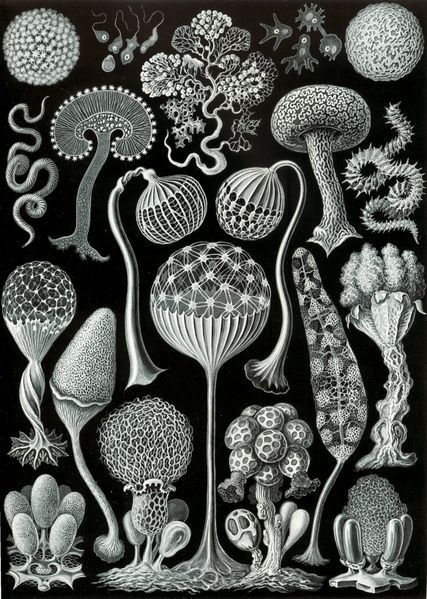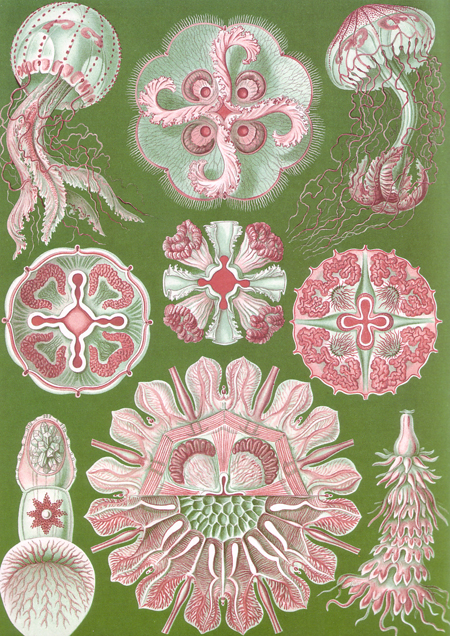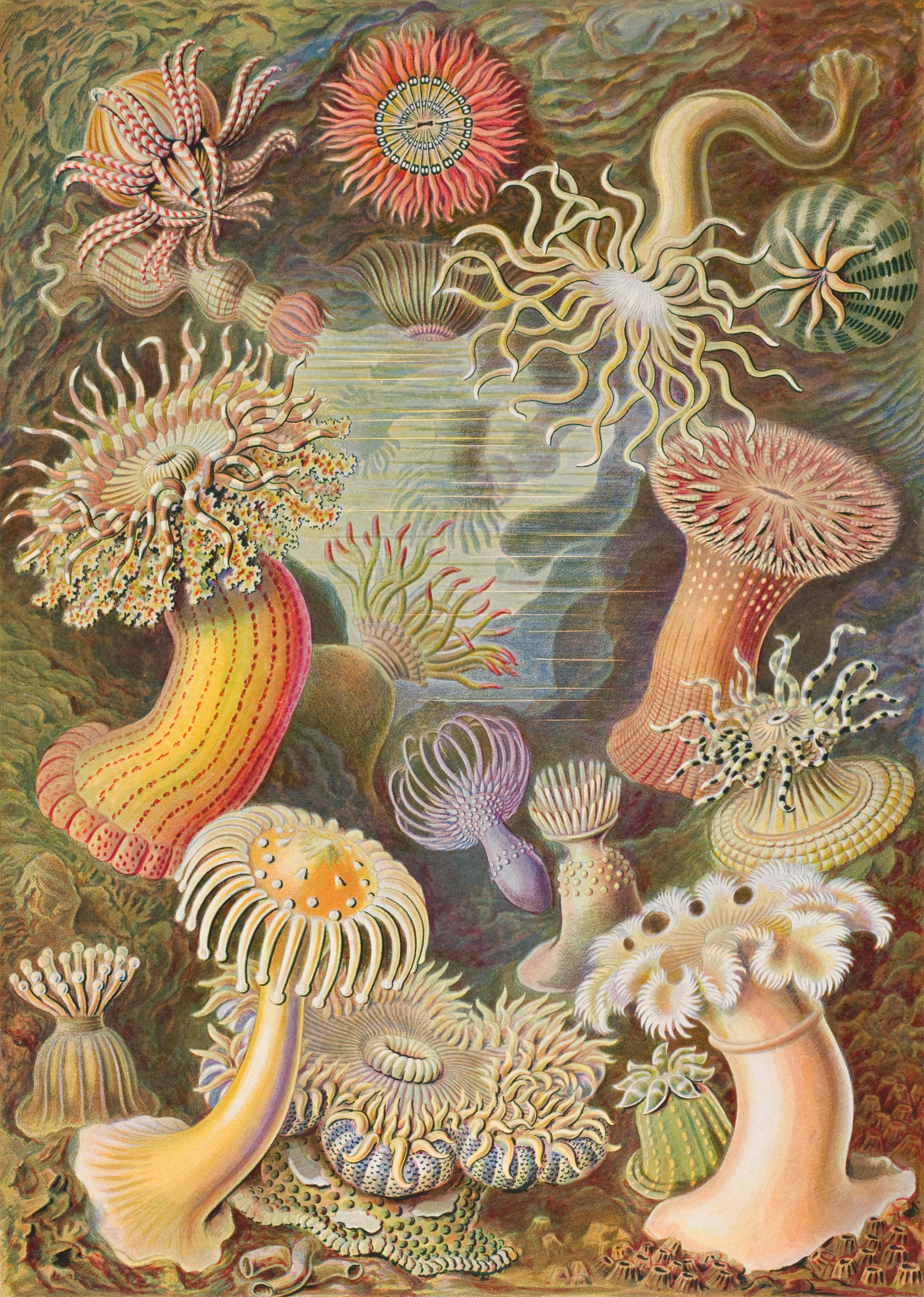ERNST HAEKEL
Ernst Heinrich Philipp August Haeckel (February 16, 1834 – August 9, 1919), was a German biologist, naturalist, philosopher, physician, professor and artist who discovered, described and named thousands of new species and mapped a genealogical tree relating all life forms. Haeckel promoted and popularized Charles Darwin's work in Germany.
The published artwork of Haeckel includes over 100 detailed, multi-colour illustrations of animals and sea creatures.Haeckel has been my favourite illustrator since high school. I admire his scientific mind but it is mainly because of his ability to illustrate real things and document them factually whilst creating magical and fantastical images that give you a feeling like you are looking for the first time. I get the same feeling when I look at the work of Karl Blossfeldt. This is what I want people to feel when they look at my work.













